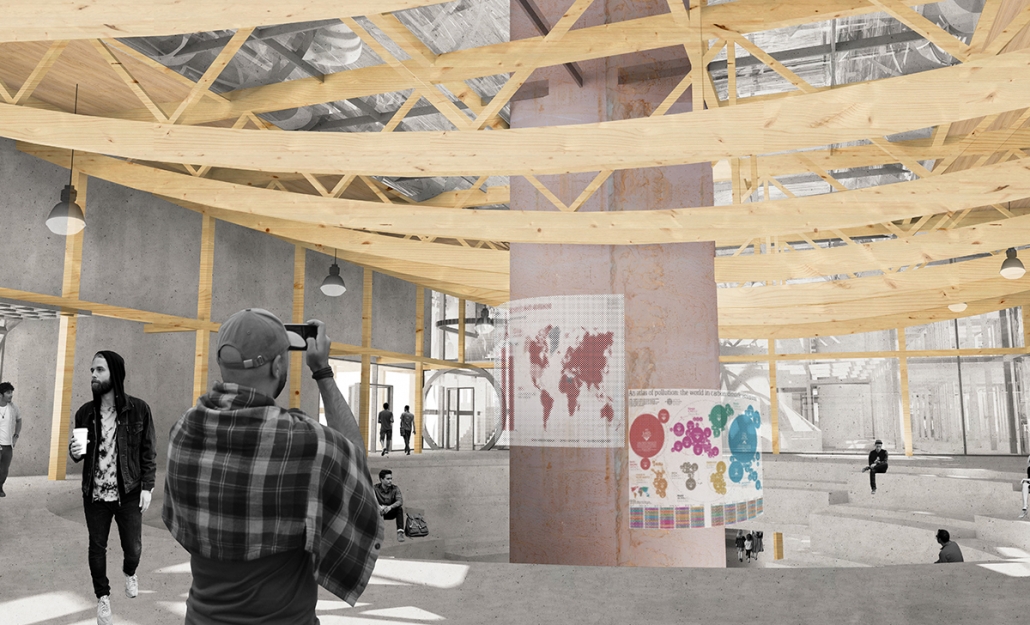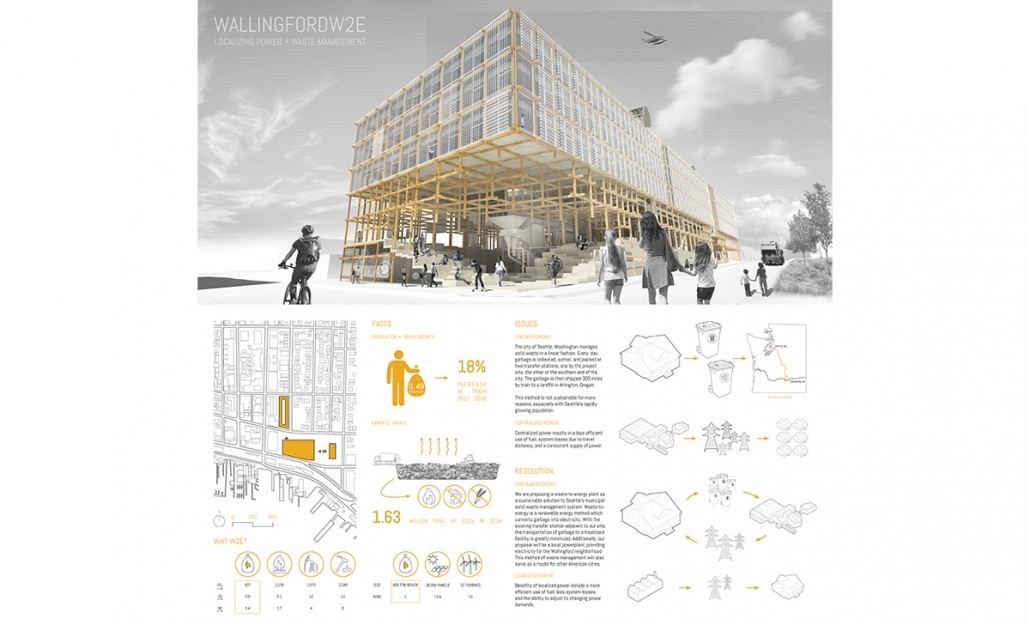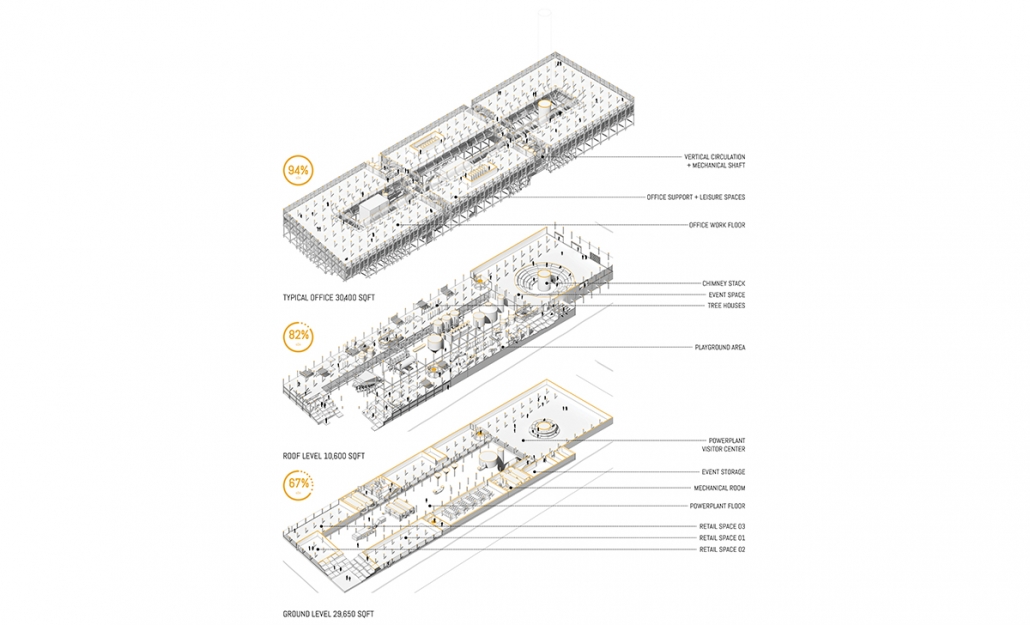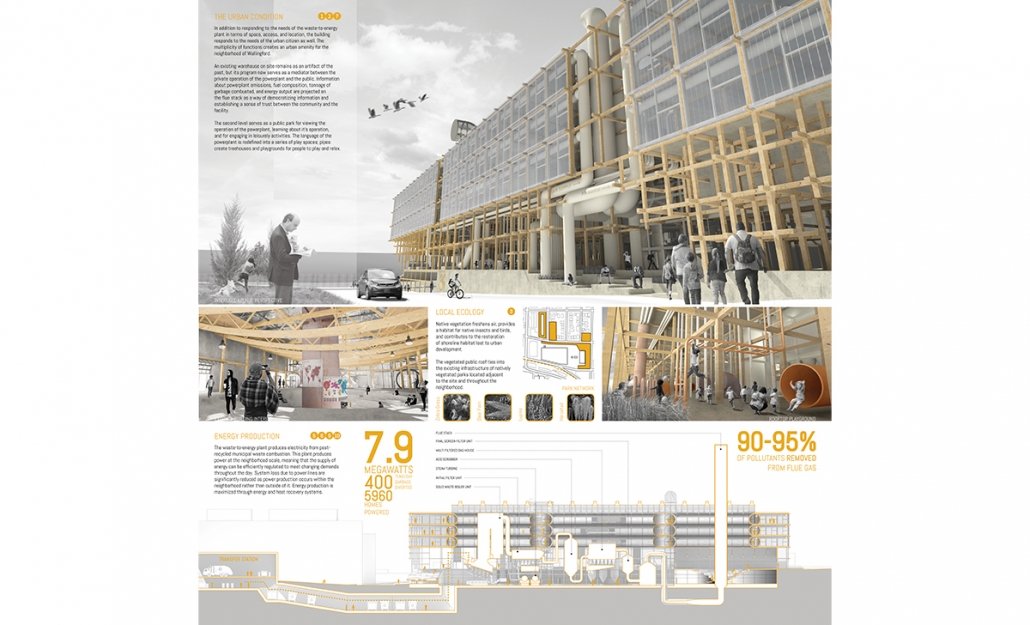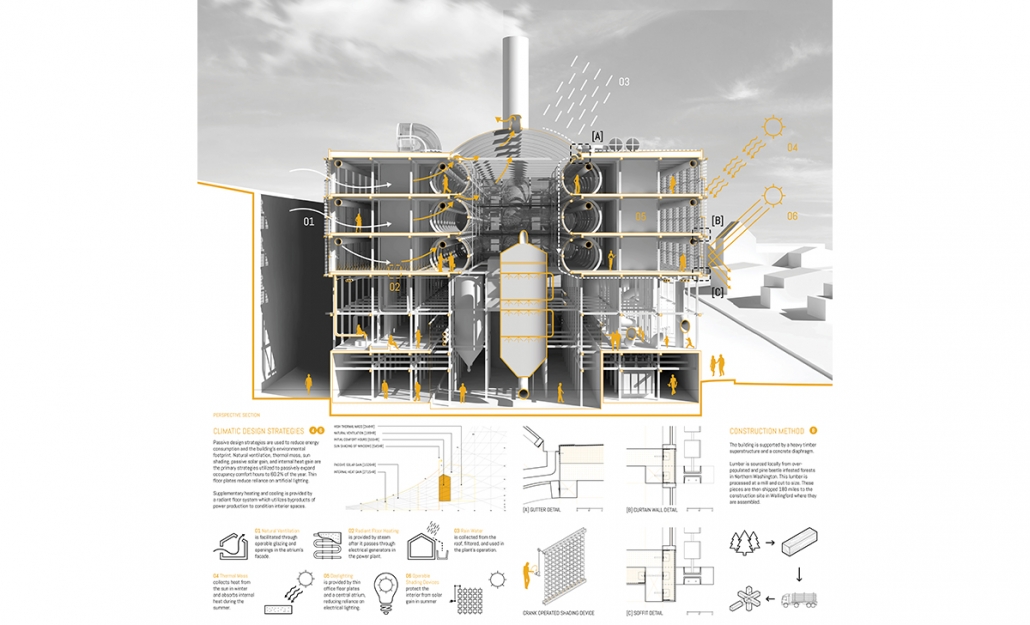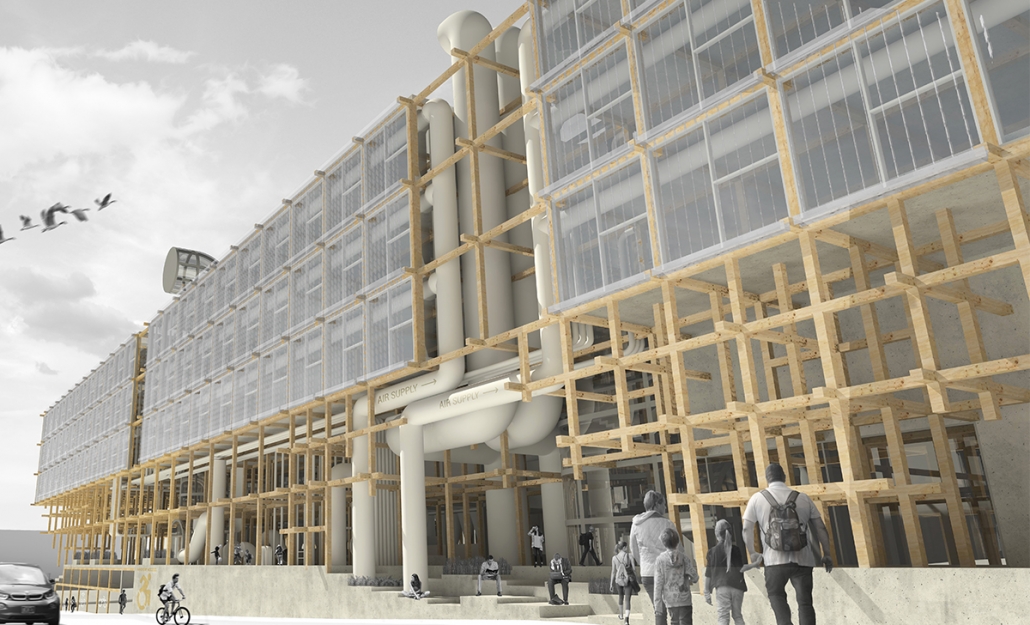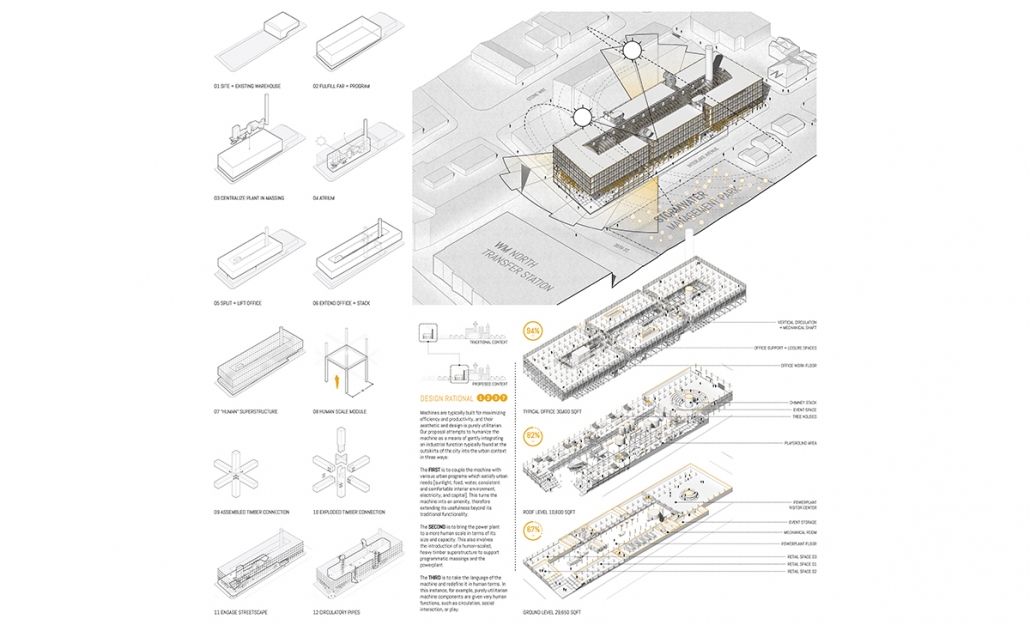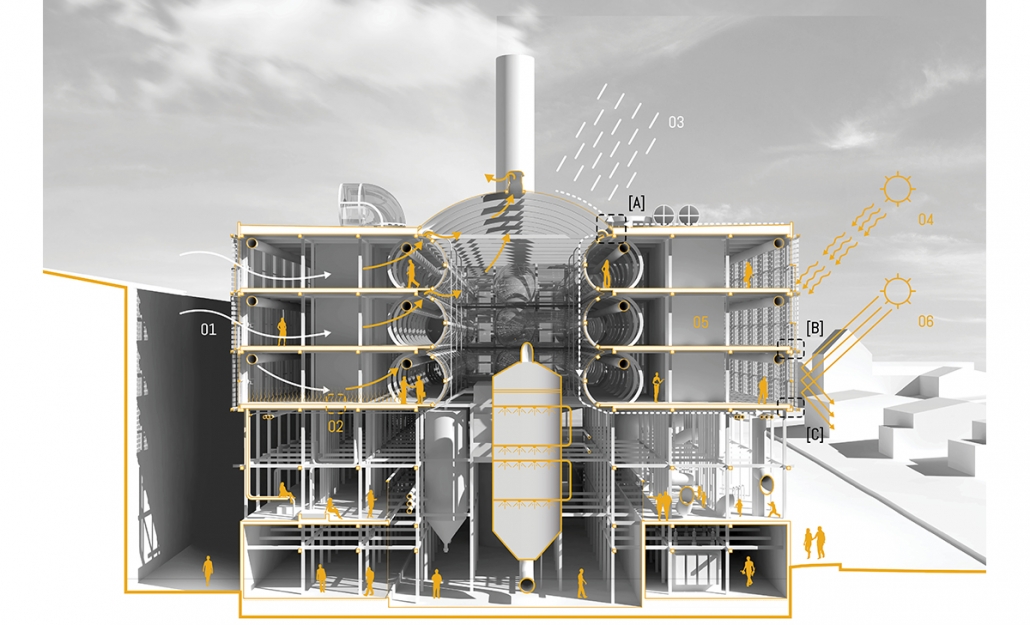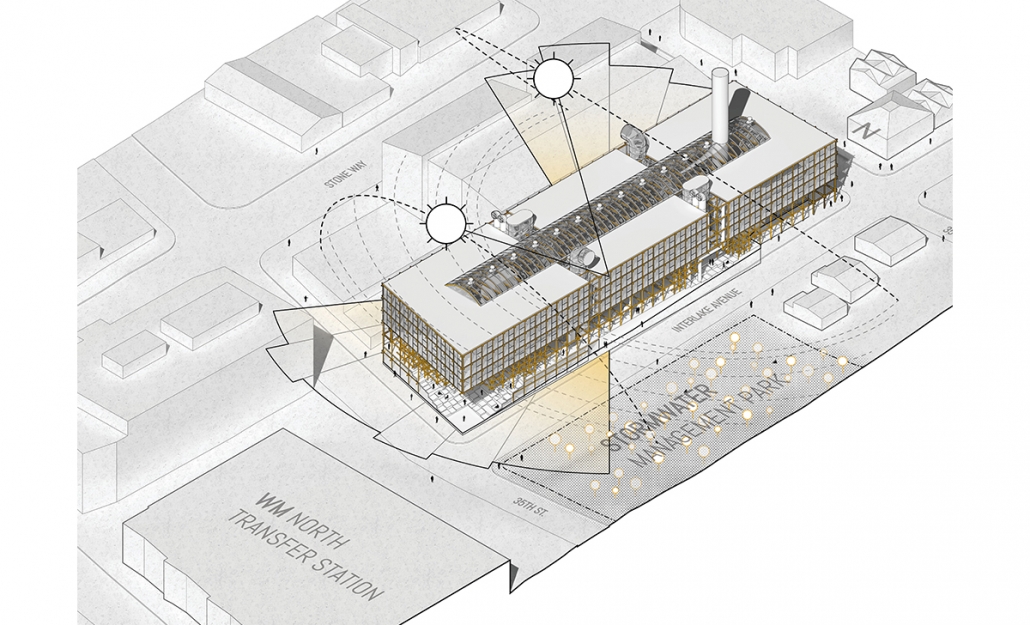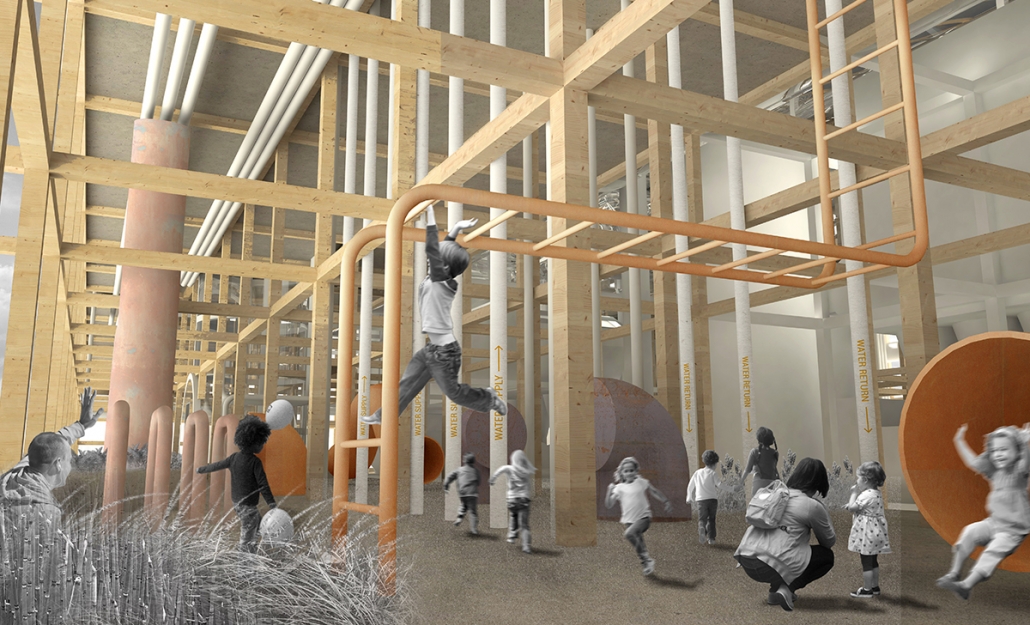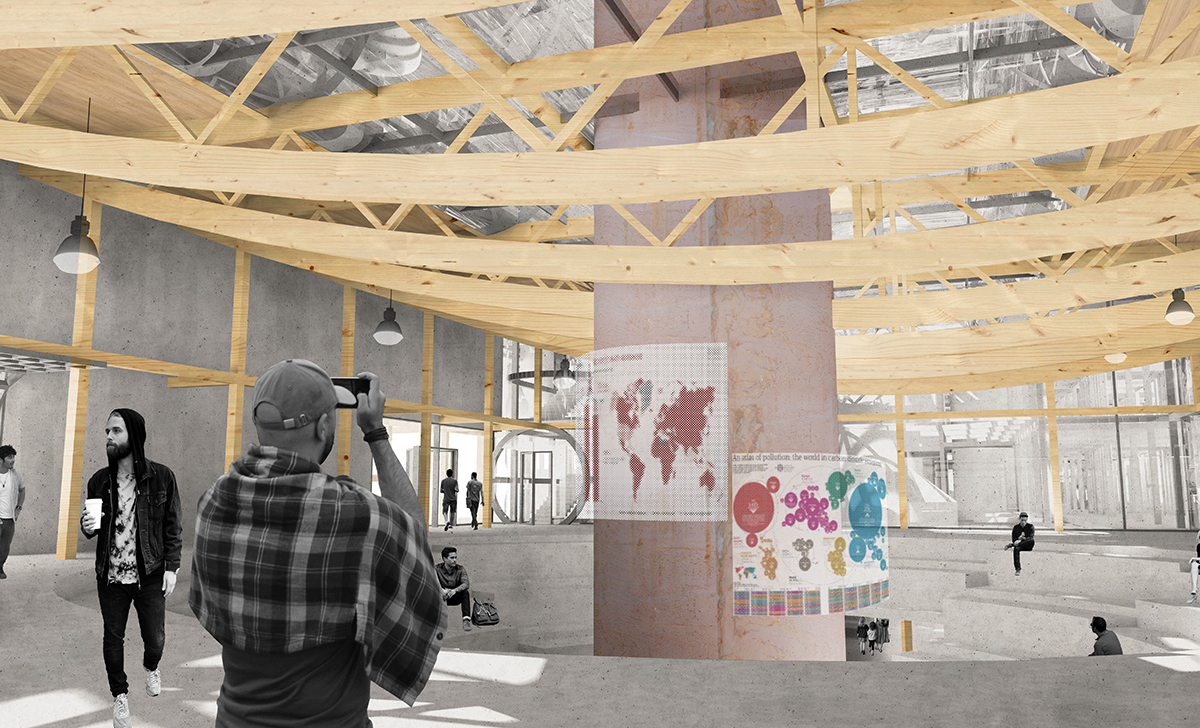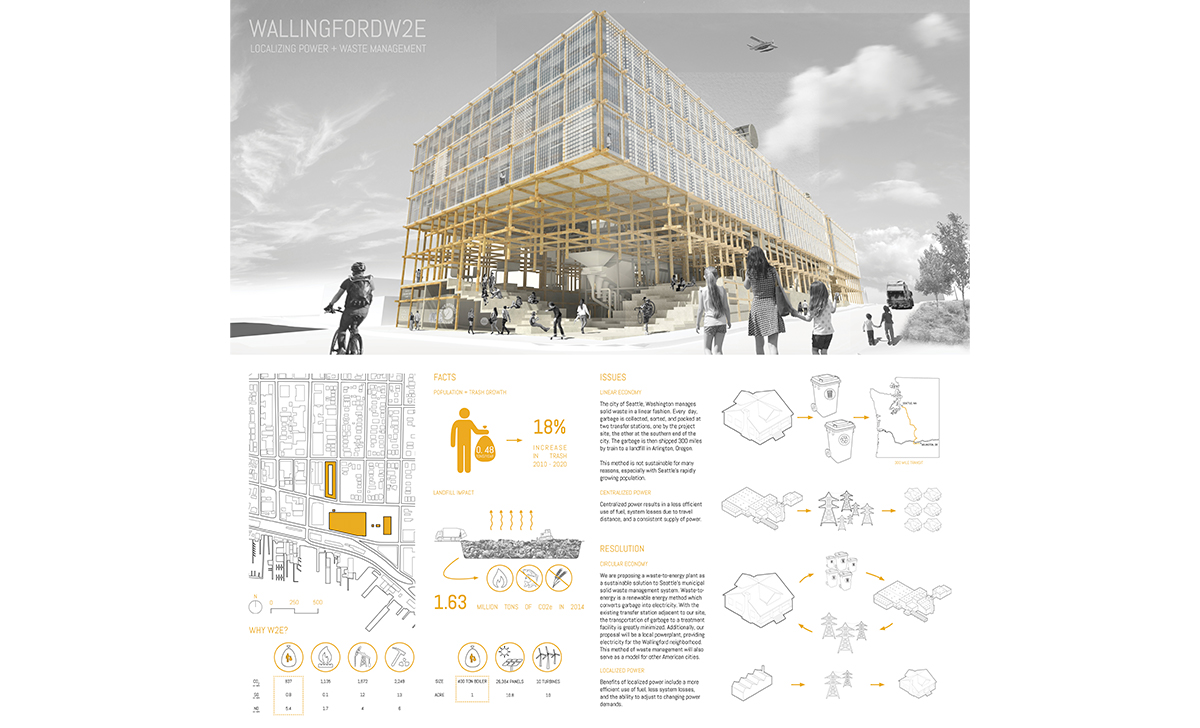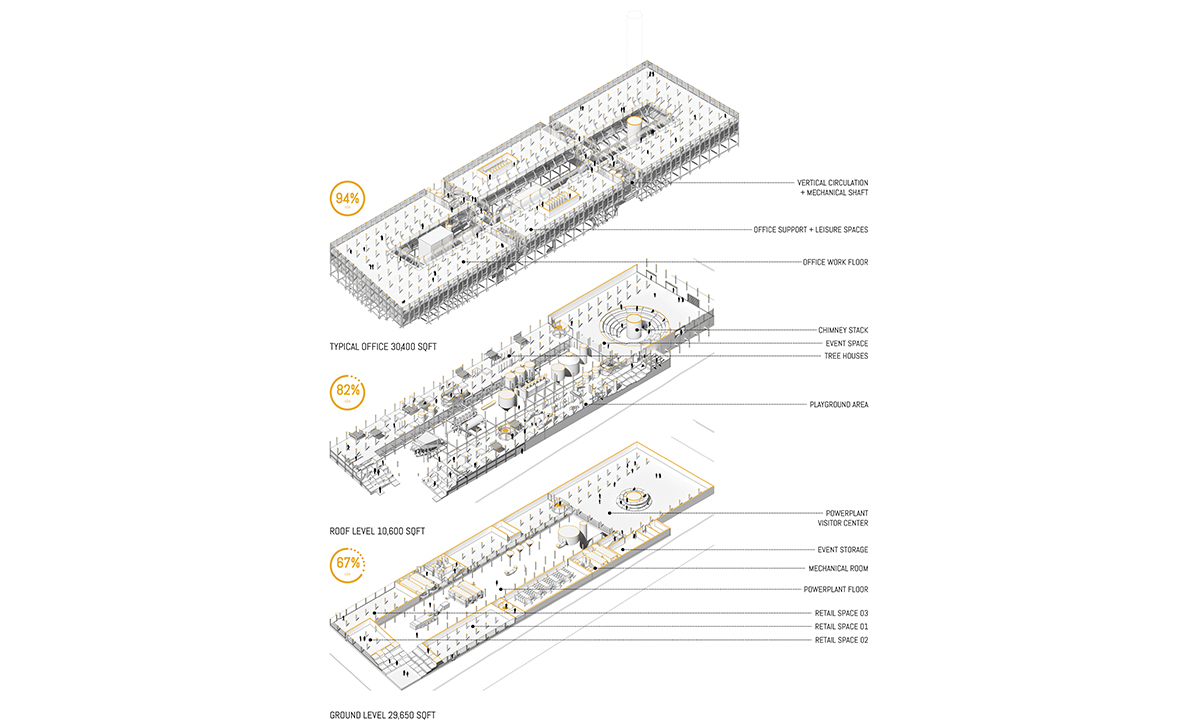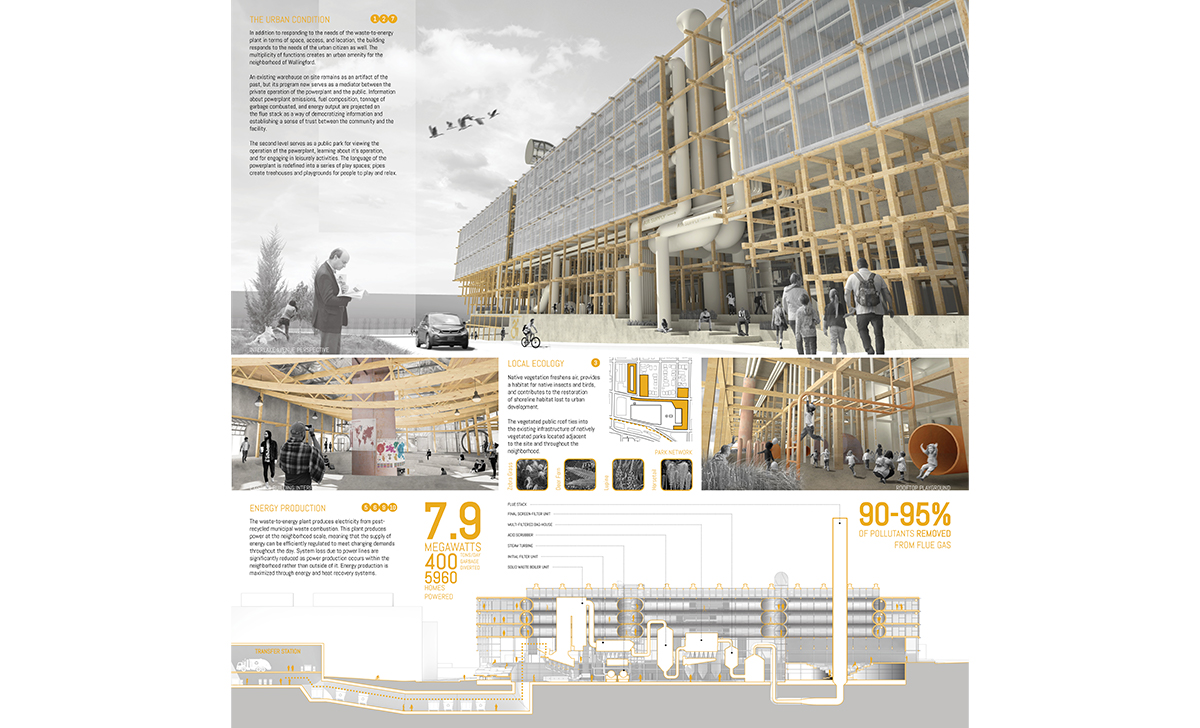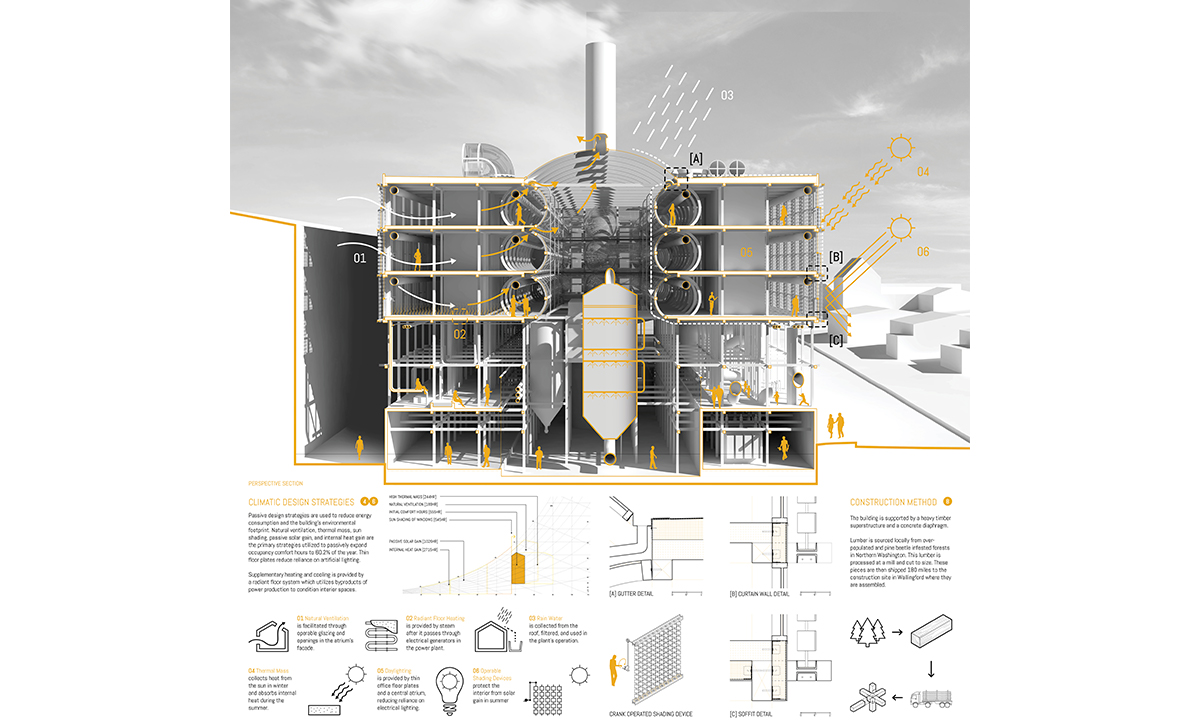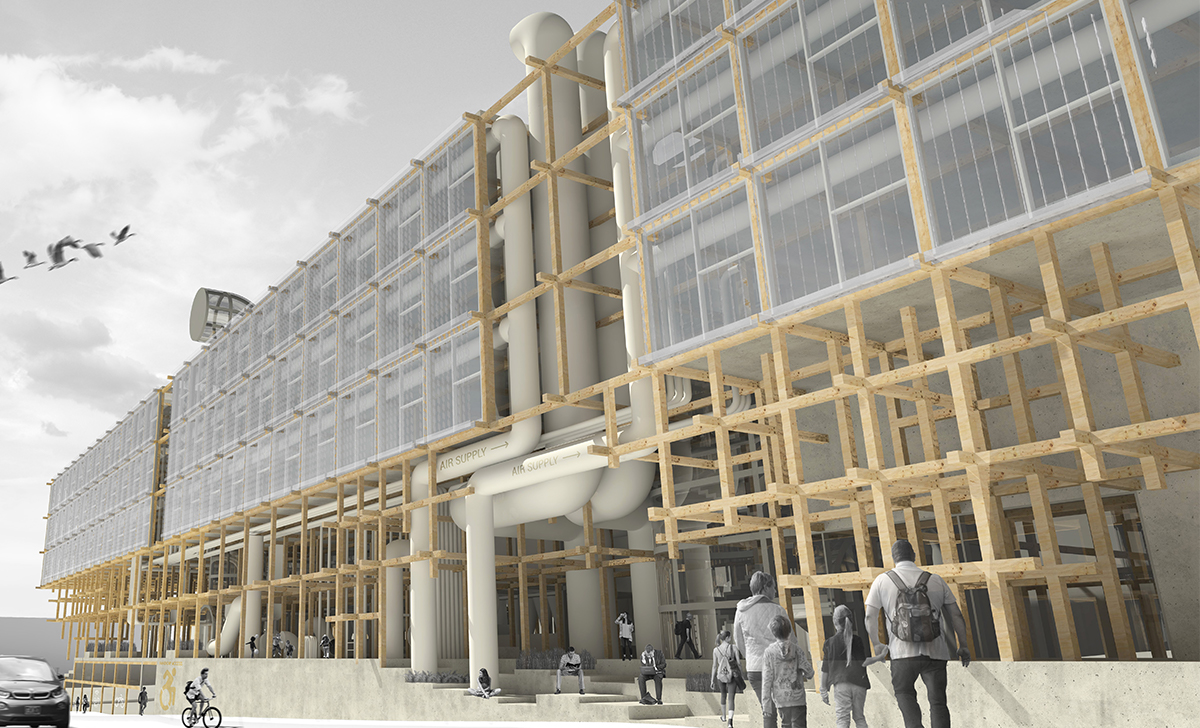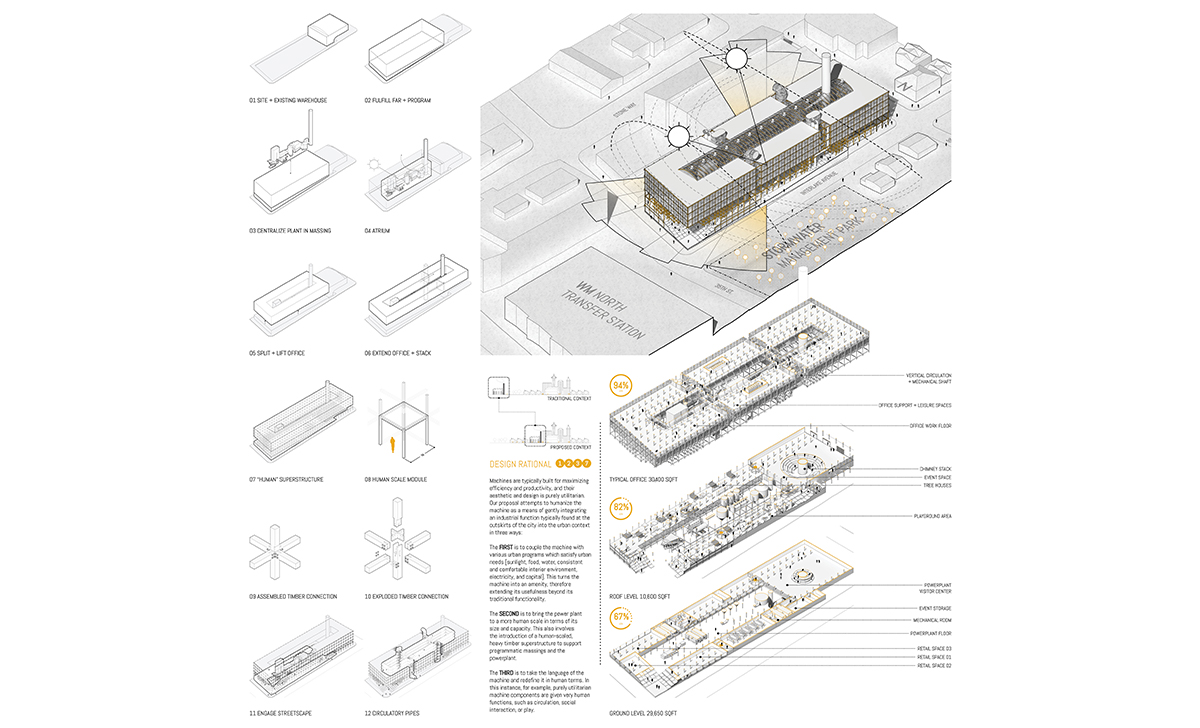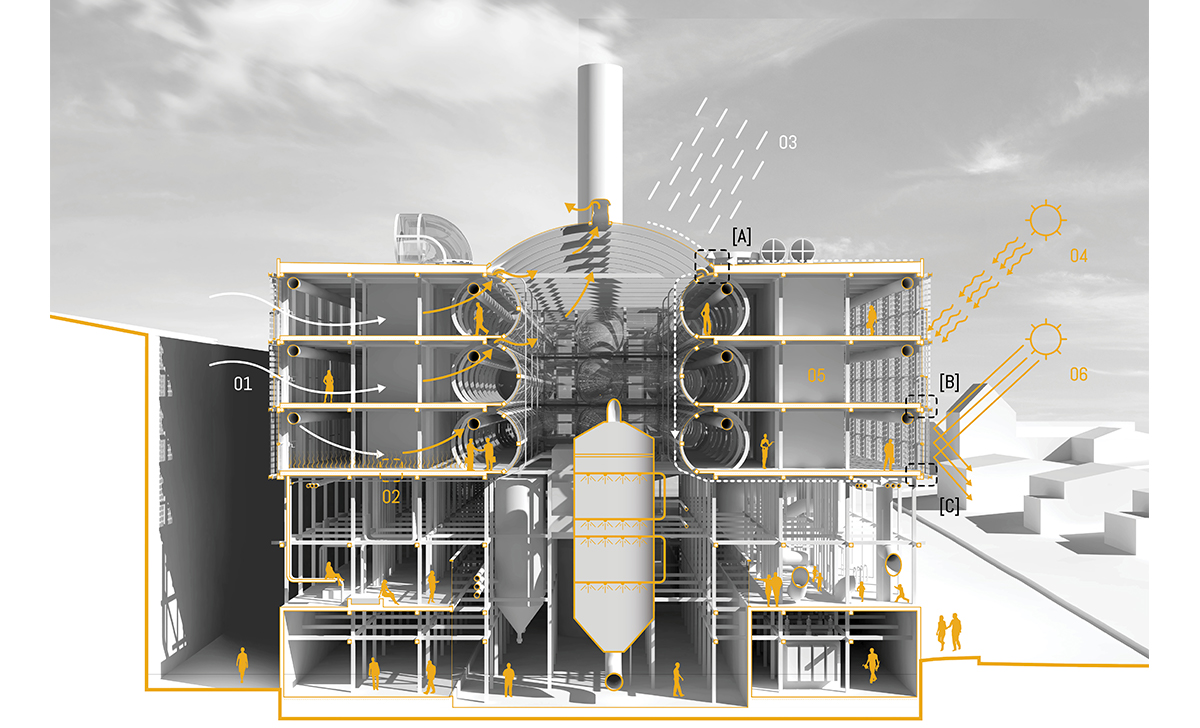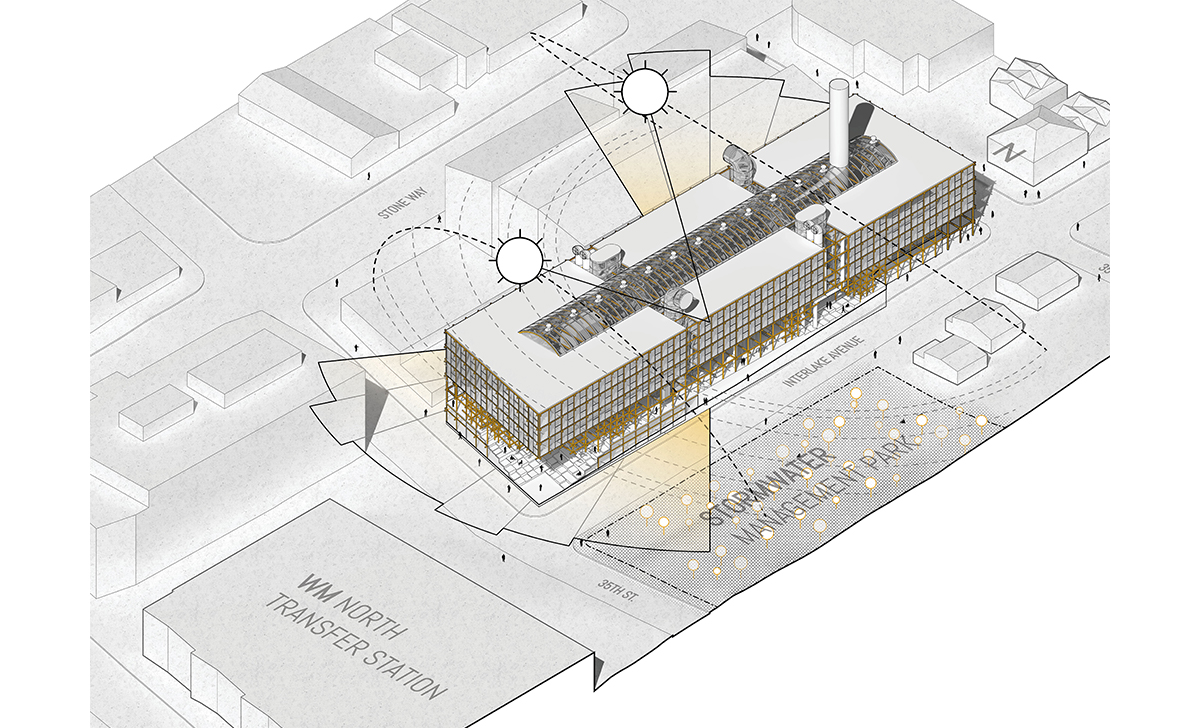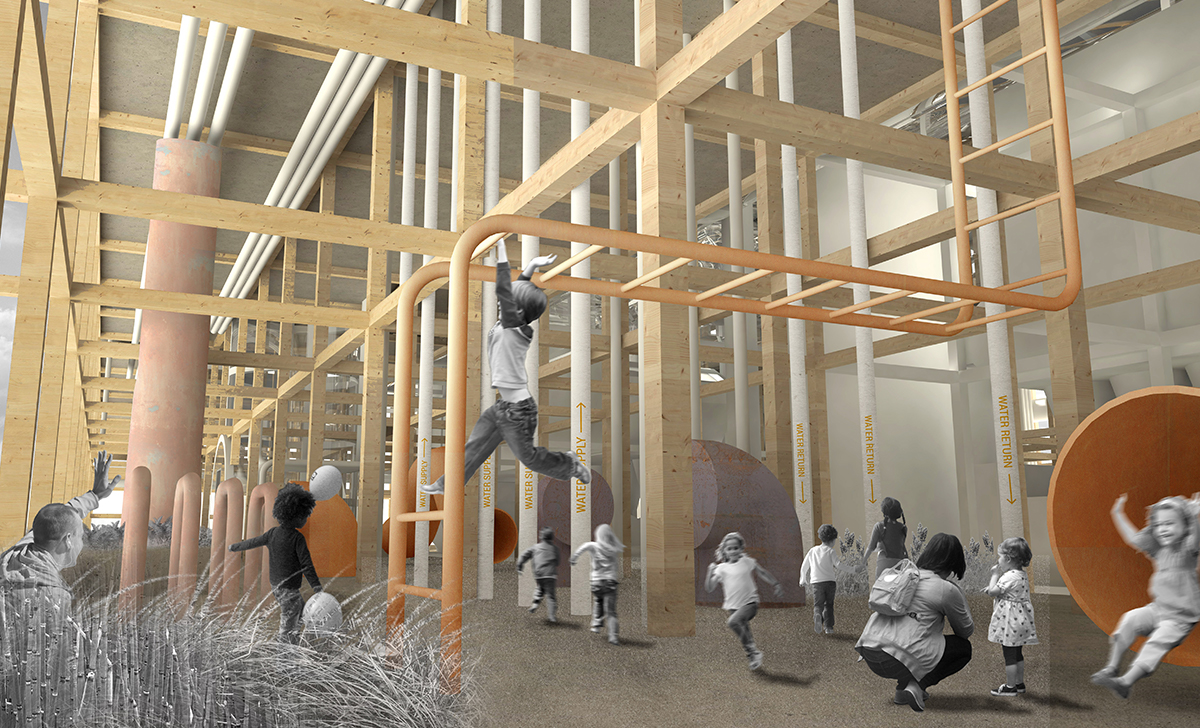2018-2019 COTE Top Ten Winners
Winner: Wallingford W2E
Sean Anderson, Tobias Jimenez, & Haley Ladenburg
Juror Comments
The Wallingford W2E project does a terrific job of imagining architecture as infrastructure, an idea of great potential in moving towards a more sustainable future. This optimistic design is innovative on multiple scales including great consideration of human experience. In addition to tackling global issues of waste, this project is well-researched and incorporates details that make the building successful in its specific site.
Project Description
The city of Seattle, Washington lacks a sustainable solution for municipal waste management. With a population growth of over 18% since 2010 and a projected growth of 55,000 residents per year, the amount of waste produced by the city will only continue to increase. Seattle’s current method of managing municipal waste, which involves sending garbage by train everyday 300 miles south to a landfill in Arlington, Oregon, cannot handle such rapid increases in population and trash production, and it contributes greatly to GHG emissions. Landfills also are an unsustainable use of land, contribute greatly to greenhouse gas emissions, and have the potential to pollute vital groundwater sources. Additionally, centralized power production is unsustainable in its consumption of resources, as two-thirds of energy produced is lost to transmission through networks of powerlines and transformers. In creating a sustainable and reliable power supply, resources must be used more efficiently, and the supply chain should be able to match changes in power demand.
The goal of WallingfordW2E is to provide a sustainable solution to municipal waste management in Seattle and provide a small-scale, localized means of generating clean energy for the surrounding neighborhood. To achieve this, we propose to locate a waste-to-energy powerplant adjacent to an existing waste management transfer station located in the neighborhood of Wallingford. The waste-to-energy powerplant will combust all post-recycled and sorted municipal waste from the transfer station to provide electricity for the community.
With a negative public perception of waste-to-energy technology in the United States, and a history of air pollution in the neighborhood due to a now-decommissioned gas manufacturing facility, the successful placement of a waste-to-energy powerplant into Wallingford is difficult to make palatable. Our approach involves a gentle integration of the powerplant by “humanizing” the machine to accommodate the urban context and the community. “Humanizing” the machine attempts to grapple with a shift in context. Typically located at the periphery of the city where people are not, industrial architecture has developed to satisfy efficiency and the needs of the machines which occupy it. As we propose to move the machine back into an urban context, it must accommodate a variety of human needs. By first coupling the powerplant with mixed-use urban program, we turn a piece of infrastructure into an urban amenity. These mixed-use programs include retail spaces, three levels of office spaces, a large park, and a visitor center for events and to showcase information about the powerplant. The powerplant is located centrally in the programmatic mass, and the mass is split horizontally to create a large public park, a viewing deck, and to lightly reveal the contents of the powerplant to the public. Secondly, we reduced the scale of the powerplant and the architecture to a human scale through split building masses and a human-scale heavy timber superstructure. Lastly, the utilitarian vocabulary of the machine is redefined for human use: for example, “pipes” are used to move people through the building and facilitate play in the public park.

 Study Architecture
Study Architecture  ProPEL
ProPEL 